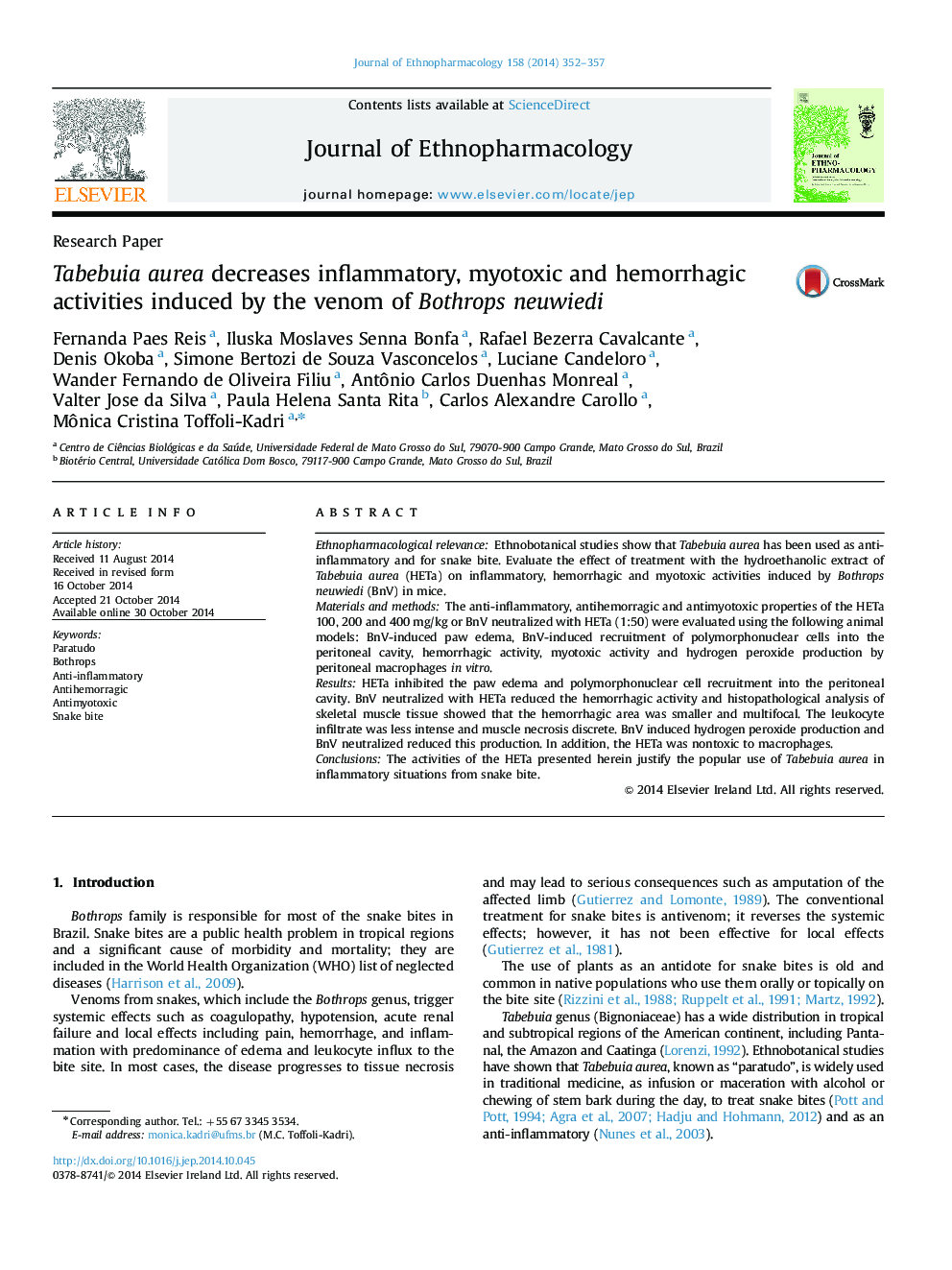| Article ID | Journal | Published Year | Pages | File Type |
|---|---|---|---|---|
| 5835974 | Journal of Ethnopharmacology | 2014 | 6 Pages |
Ethnopharmacological relevanceEthnobotanical studies show that Tabebuia aurea has been used as anti-inflammatory and for snake bite. Evaluate the effect of treatment with the hydroethanolic extract of Tabebuia aurea (HETa) on inflammatory, hemorrhagic and myotoxic activities induced by Bothrops neuwiedi (BnV) in mice.Materials and methodsThe anti-inflammatory, antihemorragic and antimyotoxic properties of the HETa 100, 200 and 400Â mg/kg or BnV neutralized with HETa (1:50) were evaluated using the following animal models: BnV-induced paw edema, BnV-induced recruitment of polymorphonuclear cells into the peritoneal cavity, hemorrhagic activity, myotoxic activity and hydrogen peroxide production by peritoneal macrophages in vitro.ResultsHETa inhibited the paw edema and polymorphonuclear cell recruitment into the peritoneal cavity. BnV neutralized with HETa reduced the hemorrhagic activity and histopathological analysis of skeletal muscle tissue showed that the hemorrhagic area was smaller and multifocal. The leukocyte infiltrate was less intense and muscle necrosis discrete. BnV induced hydrogen peroxide production and BnV neutralized reduced this production. In addition, the HETa was nontoxic to macrophages.ConclusionsThe activities of the HETa presented herein justify the popular use of Tabebuia aurea in inflammatory situations from snake bite.
Graphical abstractDownload high-res image (327KB)Download full-size image
